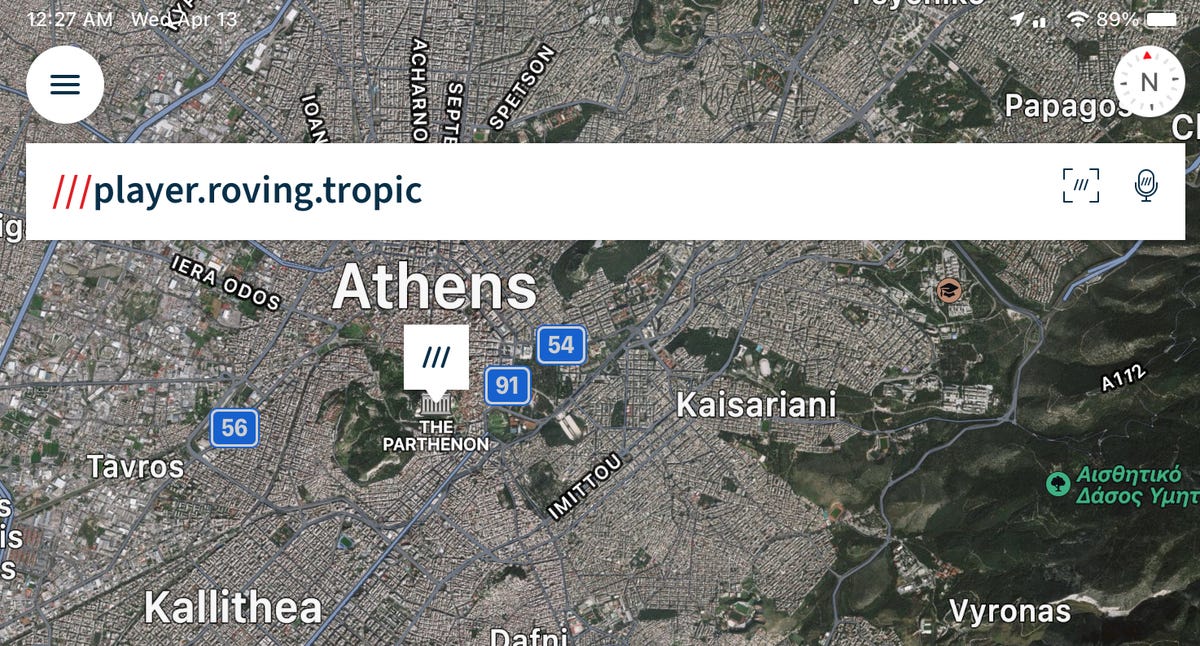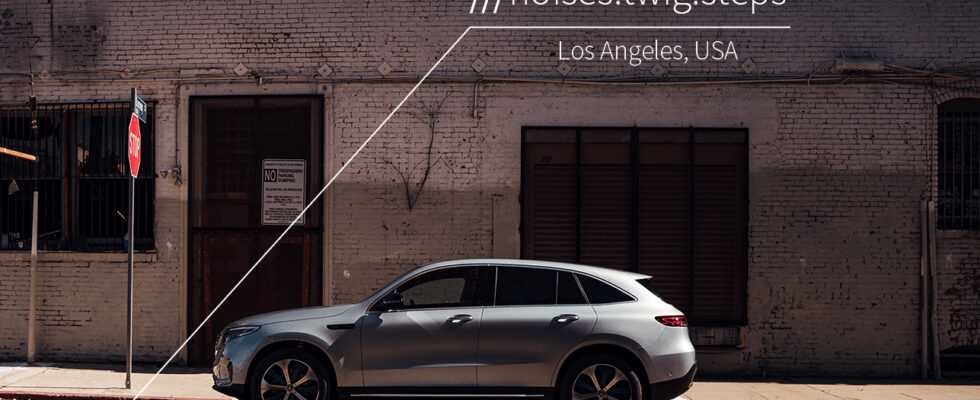Subaru is the latest in a long line of automakers to incorporate this technology. Image: Subaru
Most often humans give very simple directions to set an appointment. Signs like “under the arch”, “under the porch”, or right around the corner”. But how do people tell the machines where to meet them? “The side entrance, not the ‘main entrance’ is a natural language phrase that people understand but machines still don’t.
Nine years ago, British start-up what3words came up with a solution: getting humans to speak in a coded language that’s both easy for a person to utter and for a machine to process. A coded language that can be transformed into a URL, and highlights a 10 square meter area to meet.
The singular achievement of what3words is therefore to have divided the total surface of the planet into plots of 10 square meters. The total surface of the Earth is 510.1 million square kilometers, which is equivalent to 57 trillion 10 square meter parcels.
This week, what3words won a new customer for its addressing system, car manufacturer Subaru. Subaru will incorporate this technology into its new Outback models.
“We particularly focus on the human-machine use case”
“We are particularly focused on the human-machine use case. And the use in cars, in particular, represents a huge opportunity for us,” Giles Rhys Jones, chief marketing officer of what3words, told ZDNet.
During a demonstration last Monday, Jones took the reporter from ZDNettake a ride in the latest Mercedes incorporating what3words technology. The car’s voice assistant can receive a what3words command and use it to offer navigation, instead of speaking an address.
By using 40,000 English words in combinations of three, one can get a total of 40,000 possible combinations raised to the third power, or 64 trillion. That’s more than enough to have a three-word combination for each plot. Three-word phrases are listed for each planet patch on the what3words website and app.
Words are randomly assigned via an algorithm. Look at the Parthenon atop the Acropolis in Athens, and the patch centered on the ancient temple is “Player Roving Tropic”. The majestic Angkor Wat in Cambodia is “Regulates Slab Tacky”. Mount Taylor in Antarctica is “Corked Dolphins Sirs”. The phrase database has been established in 50 languages, including Mongolian, Swahili and Welsh.

Image: what3words
The technology may have particular utility in a geography such as Mongolia — the first country to integrate the service into the national postal service. Part of the population is nomadic, and giving a sentence for a current location of 10 square meters can be an alternative to giving a permanent postal address.
English retains a linguistic advantage, however, as it is the only language the company uses to address each of the 57 trillion squares – including the oceans, which make up 71% of the earth’s surface. All other languages are limited to 25,000 words, resulting in only 15.6 trillion combinations used for land masses.
“Naughty” words are eliminated, as are homonyms, to avoid potential confusion when conversing with a voice assistant.
After catching the attention of the assistant in the Mercedes by saying the wake-up phrase “Hey, Mercedes”, just say “navigate to three words, Patio Among Tame” to bring up the on-screen navigation.
“If you’re trying to enter an address, either by typing or by voice, it’s much more difficult,” Mr Jones observed. “While in five seconds it’s a precise square, and you can be sure you’re going exactly where you want to go.”
One day, a car navigation system may be able to understand natural language sentences
One day, a car navigation system might be able to understand natural language sentences. what3words is built for a world of cars and other machines that aren’t there, in terms of language processing.
Although automakers tend to move more slowly than tech companies, the number of those joining the service is growing rapidly, with seven automakers signing on in the past six months, including Ford, Mitsubishi and Lamborghini. The company has a total of 10 car manufacturers and 11 of what are known as “Tier 1 suppliers”, i.e. companies that make various vehicle parts, including navigation system supplier TomTom .
Mercedes was the first manufacturer to join the program, and now all new Mercedes vehicles are equipped with this technology. “The chairman of Daimler understood before we even finished the first sentence,” said Jones, describing how Ola Källenius of Mercedes-Benz Group AG saw the importance of technology when what3words made its debut. speech. “They are what we call ambitious innovators,” Jones said of Mercedes. “We focus on those people.”
“Lamborghini said, ‘All about us is innovation, so we want the latest technology in our vehicles,'” Jones added. as an all-terrain vehicle.
The service is free for drivers and paid for by car manufacturers on the basis of a fee per vehicle.
But the technology also finds other users, such as first responders who need to locate people in an emergency. Delivery is another use case. “Standard Google Maps location using GPS doesn’t tell you which part of a building you need to go to; it just drops a pin in the middle of the structure,” Jones observes. Domino’s Pizza therefore offers customers the option of using a phrase for delivery.
This technology has also made its way into popular culture. She has been featured as a plot element in soap operas such as CSI. British publisher Dorling Kindersley has also published a series of travel guides in which each recommended site is accompanied by a three-word code.
